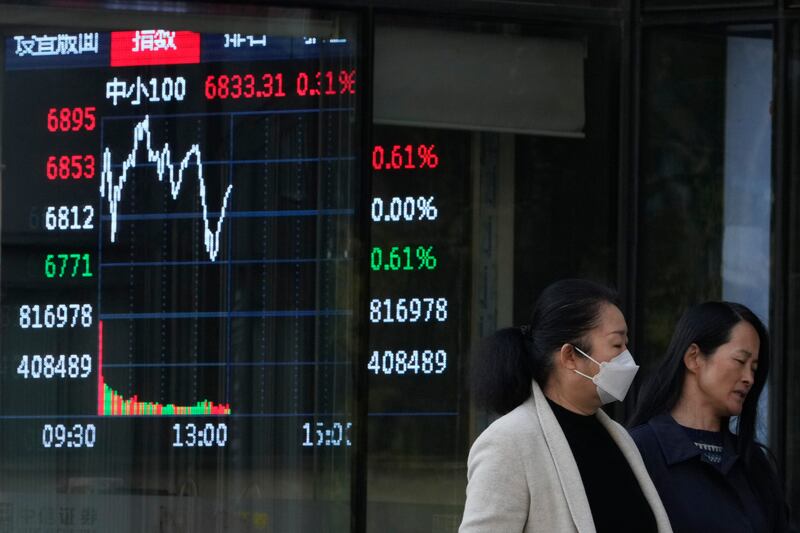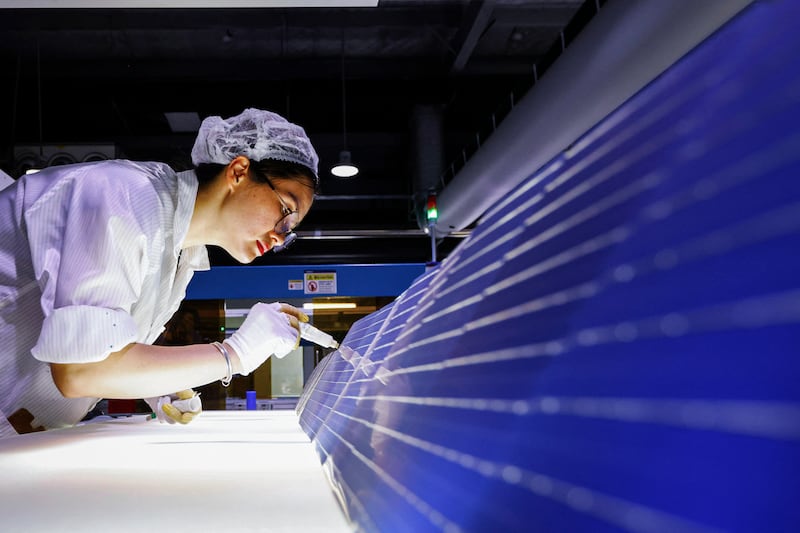WASHINGTON - Donald Trump has made no secret of his plans to hit China with massive tariffs. The only question is how much exactly.
Calling tariffs “the most beautiful word in the dictionary,” the president-elect threatened during the 2024 election campaign to hit Chinese imports with tariffs of “more than” 60%, effectively slamming the brakes on trade between the world’s two biggest economies.
On Monday, he said that whatever rate was ultimately levied, there would be an extra 10% tariff on top of that to punish Beijing for continued outflows of precursors for the synthetic opioid fentanyl, which U.S. authorities say is killing around 75,000 Americans a year.
All that suggests that the U.S.-China relationship looks set under the second Trump presidency to become increasingly dominated by a grand rebalancing of trade ties, experts told Radio Free Asia.

In many ways, they said, things will pick right up from where Trump left them in January 2021, having hit China with some $50 billion worth of tariffs, which the Biden administration has since declined to roll back.
Yet things may be a lot different this time.
Trump tariffs 2.0
Beijing now has nearly a decade of experience in dealing with trade pressure from the United States, said Shanghai-based Han Lin, the China country director for the Asia Group business consultancy.
While the world’s second-biggest economy was looking to increased exports as its ticket out of slumping growth, he said, Chinese economic officials also now have experience with retaliatory measures and knowledge of how best to hit back at aggressive U.S. policies.
“China is better prepared now than during Trump 1.0,” Lin told RFA. “It has a wider range of carrot-and-stick trade responses, but the ever-present need for foreign investment may calibrate their behavior to send a message of strength without unnecessary escalation.”
A likely response from Beijing, he explained, would be to let the Chinese yuan “drift weaker,” so the exchange rate with the U.S. dollar makes Chinese goods more competitive for American buyers without directly needing to confront Trump or spark a tit-for-tat trade war.
“This will help offset the impact of U.S. tariffs on China exporters,” he said, noting they would “inevitably” get requests to lower their prices from American importers looking to avoid their own revenue losses.
RELATED STORIES
Trump vows an additional 10% tariff on Chinese goods
China expecting harder times after Trump victory
Trump says China’s Xi would be his first call, would demand he honors trade deal
How would Harris and Trump differ on Asia?
But it’s not even clear yet how much damage control will be needed.
Zhiwu Chen, a professor of finance at the University of Hong Kong, said China’s leadership likely saw Trump’s campaign threats of 60% tariffs as more of a “negotiating tactic” than a solid policy promise.
From Beijing’s view, he said, the final tariff rate was likely to be lower – especially if China agrees to buy more American exports like agricultural goods or oil, thereby mitigating the U.S. current account deficit.
“What the leadership in Beijing learned from Trump 1.0 is that he is for real and transactional, kind of like an open book, so they may prefer his style, though they don’t like his bare-knuckle style,” Chen said, adding he believed trade ties could even “warm up somewhat in 2025.”
Trump ally Elon Musk would be a key dissenting voice in the White House, he explained, and would advocate against a total decoupling with the Chinese market, given his extensive business ties there.
“Elon Musk can be counted on to temper that push as Tesla depends so much on the China market,” Chen told Radio Free Asia.
The art of the deal
Others are less convinced that the author of the “The Art of the Deal” is necessarily so focussed this time on striking a deal with Beijing.
Tao Wang, the Hong Kong-based chief China economist at the UBS Investment Bank, noted that China’s government would not blush at the idea of negotiating with Trump to find a new status quo.
“I think the Chinese government would be very open to having a deal,” Wang at a Nov. 20 event at the Peterson Institute for International Economics. “It’s just not really clear to me what Trump would want.”
“Last time, he said he’s the great salesperson – he wants to sell more soybeans, and LNG, and all these American products,” she said. “Now he seems to want something different: He wants fiscal revenue from tariffs, and he wants to bring manufacturing back to the U.S.”
On the campaign trail and in his debate with Vice President Kamala Harris on Sept. 10, Trump touted the fiscal revenue a 60% tariff on Chinese imports would generate, arguing that the funds paid by Chinese importers could even offset tax cuts for Americans.
Still, even if Trump is serious about the 60% Chinese tariff rate, the practicalities of governing could temper his plans once in office.
At the same Nov. 20 event, Mary E. Lovely, a senior fellow at the Peterson Institute for International Economics, said that the campaign pledges of tariffs on China would be the easy part for Trump.
When so many basic goods used by American consumers and businesses come from inexpensive Chinese sources, she argued, implementing the tariffs without fanning inflation would be the hard part.
Economists warn that the tariffs on China will accelerate inflation just as the U.S. economy is recovering from an extended bout of surging prices.
“I don’t think anyone really knows how realistic his team has been about alternative sources,” Lovely said, explaining that the current White House had been struggling to diversify U.S. supply chains.
“We saw that in the Biden administration, where there was effort to create alternatives. They really didn’t make a whole lot of progress,” she said. “This is a really difficult problem. I’m afraid we don’t know if the new team has really faced up to how difficult it is going to be.”
Dear leader
One thing seems clear though, and that’s that the U.S.-China relationship will increasingly be defined by the personal relationship between Xi and Trump, who in his first term variously expressed both admiration and disdain for China’s authoritarian leader.
“President Trump will probably want to engage directly with President Xi, and the leader-to-leader level interaction will color and inform the agenda and the tone of the relationship going forward,” said Ryan Hass, the director of the Brookings Institution’s John L. Thornton China Center, at an event hosted by the think tank on Friday.
The Biden administration struggled to ignite talks between lower-level U.S. and Chinese officials. Bilateral tensions saw many Chinese officials – even the defense minister – ignore overtures from their U.S. counterparts, fearing the consequences of appearing too friendly.
After Biden and Xi’s high-profile summit in San Francisco last November, though, cooperation at the lower levels was resumed.

Still, Hass cautioned that Trump would not have absolute power in his dealmaking with Xi. Pressure would remain on him to maintain close alliances with allies like Taiwan, South Korea and Japan, he said.
“President Trump is not Kim Jong Un: He does not decide by fiat what the United States is, or where the United States is going,” Hass said, noting Trump was now “elderly” and “in his final term” as president.
He pointed to Rep. Matt Gaetz’s decision last week – apparently forced by Trump – to step aside as the nominee for attorney-general amid private opposition even from Trump-allied Senate Republicans.
“I mention that because President Trump’s views on alliances are also out-of-sync with the views of many members of Congress related to alliances,” Hass said, listing Senators Bill Hagerty, Jim Risch, Dan Sullivan and Marco Rubio, Trump’s pick for secretary of state.
“These are all Republicans who feel very strongly about the importance of alliances,” he said, “so I encourage us to keep that front of mind.”
Edited by Malcolm Foster.
